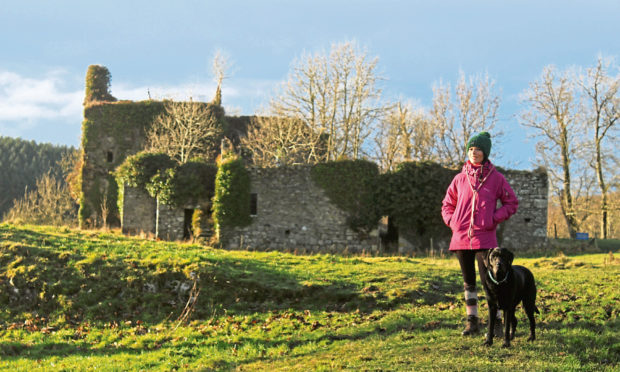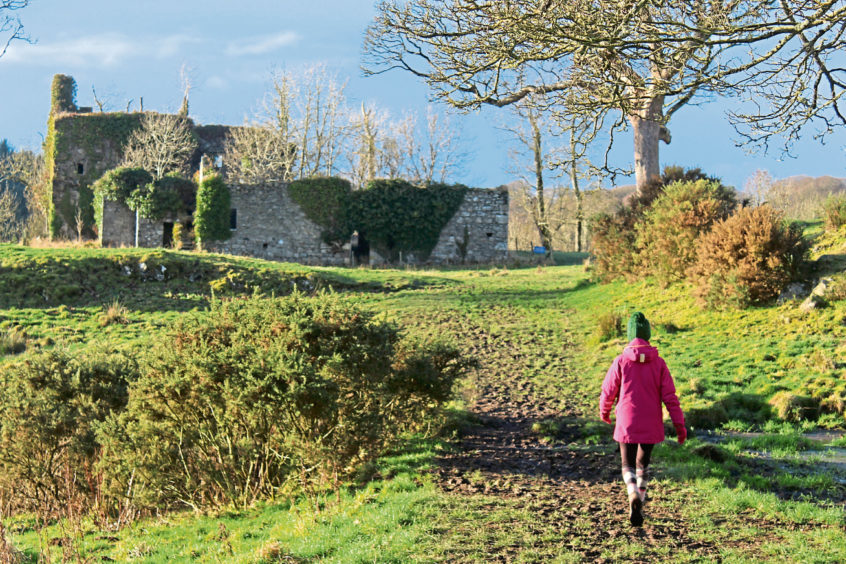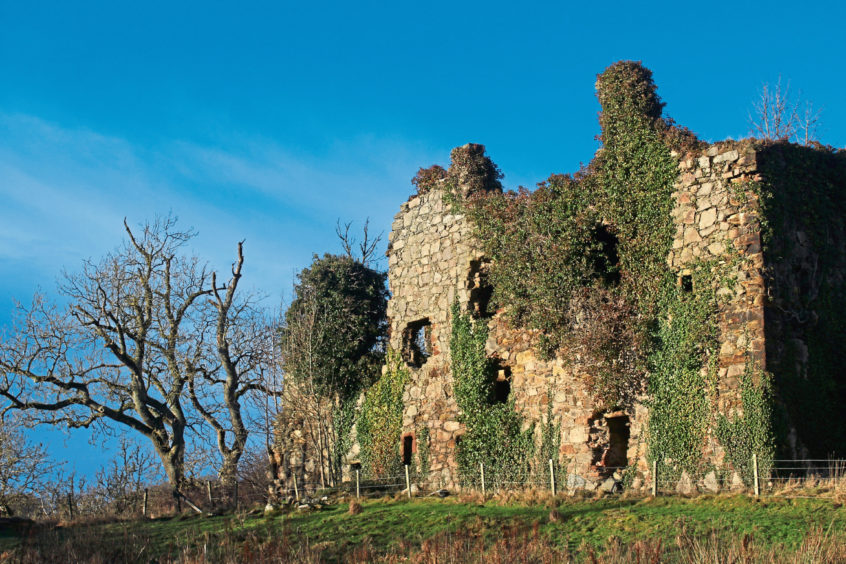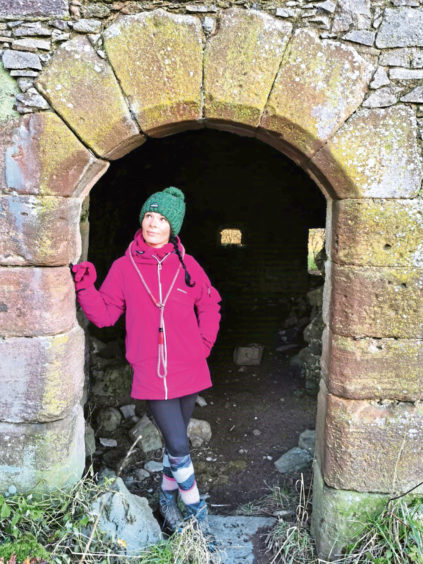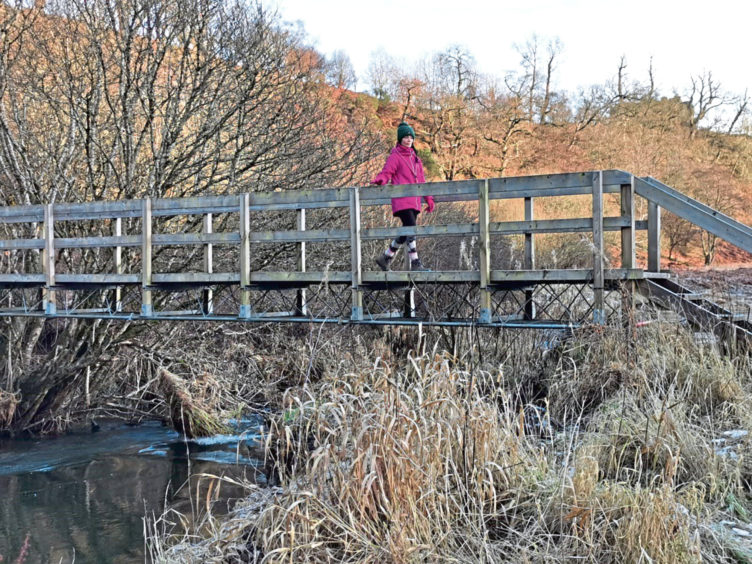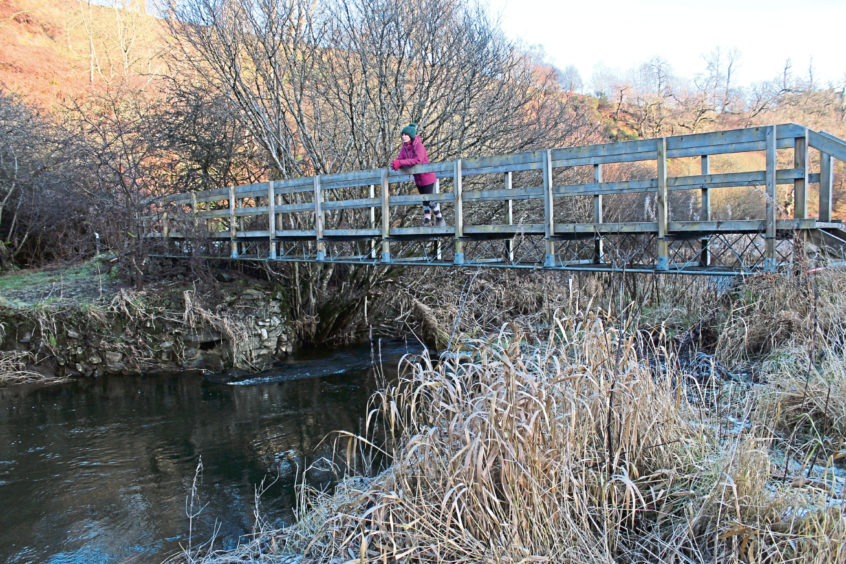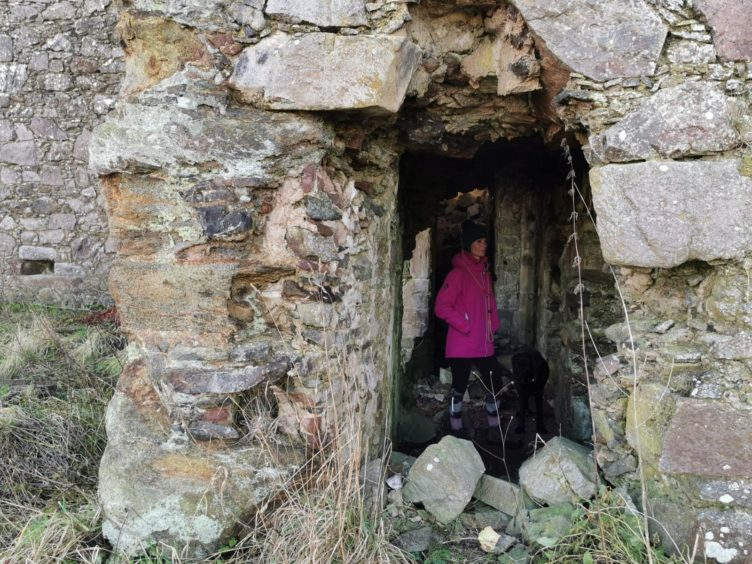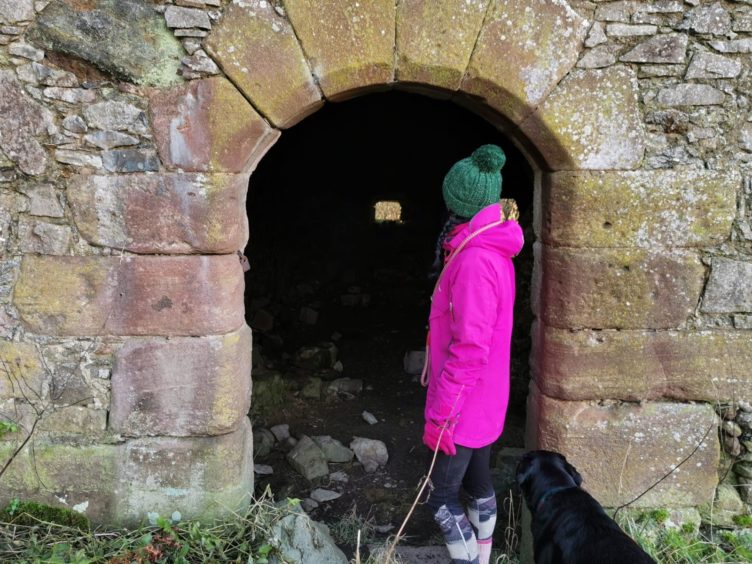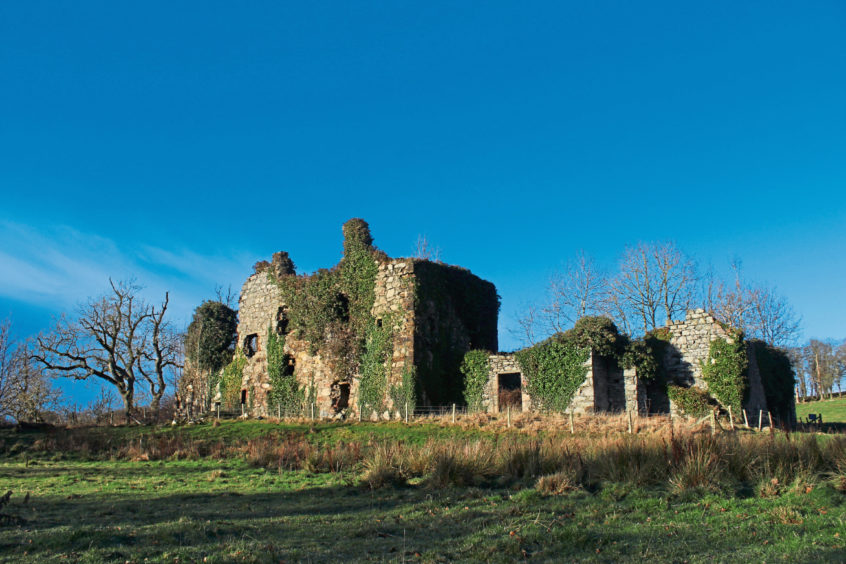Gayle explores the dramatic ruins of Gight Castle, the ancestral home of flamboyant poet Lord Byron.
The crumbling ruins of Gight Castle sit in breathtaking isolation high above the Ythan valley.
The 16th Century stronghold was the ancestral home of “mad, bad, dangerous” poet Lord Byron and it looms dramatically over a deep pool of water where bags of gold are said to lie.
I’ve enjoyed exploring the castle since I was a wee girl and always feel a great sense of wonder and excitement when the spectacular, rather desolate structure, reveals itself through the trees.
In summers gone by, I’ve picnicked on the remains of the roof (I definitely don’t advise this because it’s decayed a great deal over the decades and there’s a high risk of falling to your doom), and in winter, dusted with snow, it’s picture-perfect.
It’s a bit of a trek getting to the castle, but it’s well worth it.
There’s a small anglers’ car park, a few miles out of the Aberdeenshire village of Methlick, from which a glorious woodland track curves through scenic farmland and forestry to the castle before winding steeply downhill to the valley below.
The castle is in a sad state of decay and is being reclaimed by nature, with trees and shrubs growing in, around and out of it.
It’s ringed by a rickety old barbed wire fence and there’s a signpost advising that entry is at your own risk.
Obsessed as I am with all things derelict and abandoned, I have indeed entered quite a few times at my own risk. Again, I don’t advocate this.
If you’re curious, then maybe chance a quick peek inside the main entrance because you’ll be rewarded with seeing some amazing heart and knot detail in the stonework.
Venture deeper inside – or try peeking through windows – and you’ll see the vaulted basement and remains of the turnpike staircase.
Above the doorway is an empty niche for an armorial panel, and immediately inside is a decorative vault in the ceiling.
Rusty old nails and rotting planks of wood are in abundance, so be careful.
The castle was built as an L-plan tower house with stables and coach-house around 1560 by the Gordon family.
It came under siege from the Covenanters in 1644 and the seventh Laird of Gight apparently flung his gold into the pool to protect his vast fortune.
Once the Covenanters had cleared the castle, the laird ordered a diver to retrieve the gold from the pool, evocatively named Hagberry Pot after the Hagberry trees which lined the riverbank.
The story goes that the diver returned empty-handed and claiming to have seen the devil.
He was tortured by the laird after refusing to return to the water and is reported to have said: “I’d rather face the diel himself, than face the laird of Gight.”
The diver went back to the pool but only his mangled, quartered body returned to the surface with his beating heart on show.
As a keen but fairweather wild swimmer, I deliberated swimming in Hagberry Pot in summer… until I read this grisly tale!
Legend has it that the Pot is “bottomless”, and that alone put me off. It’s scary enough crossing the wooden bridge over it and peering into the swirling waters below.
Certainly the castle has a bleak history with various members of the Gordon family suffering violent and premature deaths.
The property became part of the inheritance of George Gordon – better known as Lord Byron – after he was born to the 14th laird, Catherine Gordon, and her husband John Byron.
Sadly, the young poet didn’t inherit the castle as it was sold to the Earl of Aberdeen in 1787 to pay off his father’s gambling debts.
The earl gifted Gight to his son, Lord Haddo, but he died in a riding accident in the 1790s, leading to the abandonment of the castle and its decline into ruin.
Way back in the 13th Century, the Scottish laird and reputed prophet Thomas the Rhymer had a stark warning for the future of Gight.
He prophesied: “At Gight three men by sudden death shall dee. And after that the land shall lie in lea.”
A few years after Lord Haddo died, a servant at Home Farm of Gight met a similar fate.
And shortly before the farm was turned into “lea”, a wall collapsed on a farm worker, crushing him to death, fulfilling the prophecy. Chilling stuff.
As you wander around the castle ruins, listen out for the skirl of the pipes.
It’ll be the ghost of a piper who once explored a secret tunnel but was never seen again.
It’s worth taking time to explore Gight Wood, on the slopes of the Ythan and just a few hundred yards from the castle.
Managed by the Scottish Wildlife Trust, it’s one of the last remnants of ancient woodland in Aberdeenshire. The broadleaved woodland of hazel, oak and rowan supports badgers, brown hares and foxes and is said to be a particularly good area for spotting red squirrels.
You can return the way you’ve come or cross the river and head into thick woodland.
You’ll soon join a well-maintained forest track and, turning left, you’ll be able to complete a circular route back to the start via the Braes of Gight.
- Please observe government coronavirus safety guidelines in all outdoor activities.
